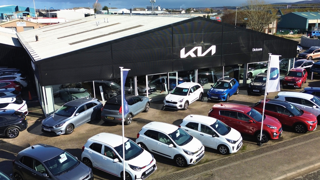It is always interesting to reflect on how the emphasis in the UK's car retail sector has changed over the years.
In the 1970s the outlook was on shifting metal, transaction-based selling with little emphasis on aftersales. The pent-up demand that had built up with the hire purchase restrictions in place at that time allowed for the focus to be on sales.
The aftersales neglect allowed disruptors such as Kwik Fit to enter the market.
As the market tightened through the ’80s, manufacturers started to launch their own ‘fast fit’ operations as part of their franchise offering.
During the ’90s there was the realisation that the retention of customers was important as it was costing too much money to keep conquesting new ones. So, the emphasis changed towards measuring customer satisfaction with dealer bonuses being linked to how well the retailer scored.
This led to trying to manipulate the customer into giving the highest possible rating. The classic being ‘if we delivered 10-out-of-10 service – you, the customer, qualify
for a bottle of wine.’
In the 2000s the change started to take place where people began to consider the full value of a customer including her/his family and friends. As a result, the
focus moved from simple satisfaction to measures such as net promoter scores.
The start of the 2010s saw the latest wave of disruptors coming into play with the likes of Rockar and Carwow challenging the existing way of doing business.
The move to online has been accelerated by the pandemic and has led to a response with manufacturers developing an online sales presence and increased connectivity with both the customer and the car.
Throughout the decades the industry has always responded to disruption and found a way to continue to add value and survive.
The challenge now is two-edged. The move towards electrification appears ongoing, but, when the value chain for electric vehicles is examined, there are not sufficient ‘value add’ opportunities for the existing structure to survive if the retailer only manages the first cycle of the vehicle.
If subsequent cycles are surrendered to the disruptors and intermediaries the sector will face a big financial challenge.
The aim for any manufacturer and its franchisees has to be to keep not only the customer but also the vehicle within its franchise network.
This has a double impact. First, it retains the revenue opportunities, but it also cuts off the used vehicle supply to the new entrants in the used market.
The sector has to address not only the customer lifetime value but also the vehicle lifetime value and decide where it wants that value to go.
The choice is keep it or allow it to fund the latest group of disruptors.
Author: Prof Jim Saker is director of the Centre for Automotive Management at Loughborough University’s Business School, Institute of the Motor Industry (IMI) president and an AM Awards judge.



















Login to comment
Comments
No comments have been made yet.